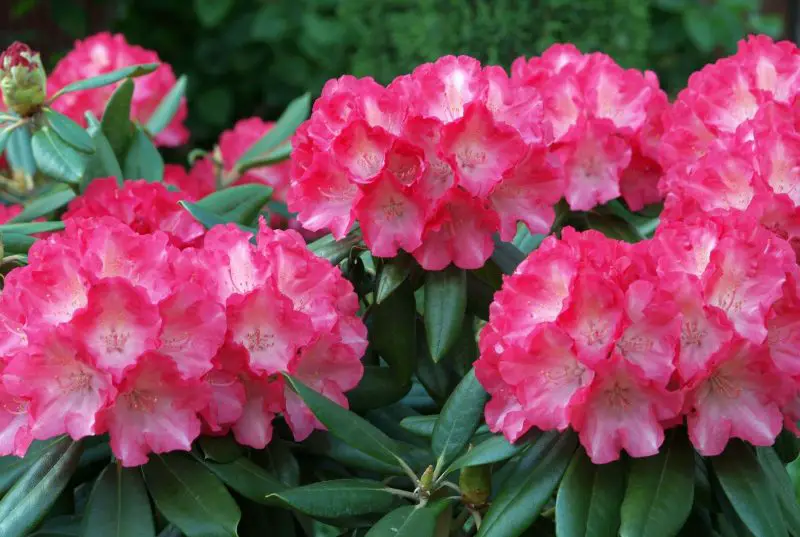Azaleas are among the most captivating flowering shrubs in any garden, known for their profusion of color and grace. Their blossoms appear like clouds of pink, red, purple, or white, brightening the landscape and signaling the start of warmer seasons. Gardeners and plant lovers often anticipate their blooming season, eager to see their azaleas burst into color. However, the timing of their bloom depends on several factors, including the variety, region, and care practices.
Understanding when azaleas bloom and how to encourage their best performance is essential for keeping them healthy and radiant. These plants can flower at different times of the year depending on their type, and with the right techniques, you can even extend their flowering period. In this guide, you will learn everything about azalea blooming seasons, factors influencing their timing, and proven tips to get the most vibrant blossoms year after year.
Understanding Azalea Blooming Seasons

Azaleas have one of the most fascinating and diverse blooming schedules in the plant world. Most varieties burst into full bloom in spring, transforming gardens into vibrant seas of color. In warmer regions, early-blooming azaleas may open their buds as early as late February or March, signaling the arrival of spring. Midseason azaleas, which include many popular hybrid varieties, usually bloom during April and May, creating the classic azalea show that many gardeners anticipate each year. Meanwhile, late-blooming azaleas can continue flowering into June or even early July, depending on local temperatures and daylight hours.
In recent years, breeders have developed reblooming azaleas, which have revolutionized traditional gardening calendars. Cultivars like the famous Encore and Bloom-A-Thon series can bloom two or three times per year. These azaleas typically flower first in spring, then again in late summer or fall, offering color across multiple seasons. Their ability to rebloom is not just a genetic trait but also depends on consistent watering, proper nutrition, and light exposure. In ideal conditions, these hybrids can provide a nearly continuous display of blossoms, creating a dynamic and ever-changing landscape throughout the year.
Climate and region also play significant roles in determining blooming periods. In the southern United States, azaleas often flower earlier and longer due to mild winters and extended warmth. In contrast, gardeners in northern climates may see a shorter bloom cycle that peaks later in the season. Elevation, soil composition, and humidity can also influence timing. By understanding your USDA hardiness zone and choosing varieties suited to it, you can predict blooming patterns accurately and plan plantings to maintain colorful displays all year long.
Factors That Affect Azalea Blooming Time
Climate and Temperature
The climate and temperature of your region have a powerful influence on when azaleas bloom. These plants are sensitive to seasonal patterns, reacting to both daylight changes and temperature fluctuations. In areas with mild winters, buds develop earlier, often leading to a spectacular early-spring display. Conversely, in regions with prolonged cold, blooms might not appear until late April or even May. Frost damage is another factor that can delay or reduce blooming, especially if buds form during a warm spell followed by a sudden freeze. Understanding the rhythm of your local climate allows gardeners to predict bloom times more precisely and protect developing buds when needed.
Temperature stability also affects bloom quality and duration. Azaleas perform best in environments where daytime temperatures hover between 60–70°F (15–21°C) and nighttime temperatures remain slightly cooler. Extended heat waves may shorten the blooming period, while consistent mild conditions enhance color vibrancy and petal longevity. Mulching and proper watering can moderate soil temperature and humidity, creating a buffer against sudden weather changes. By monitoring seasonal patterns and providing insulation during cold snaps, you can ensure your azaleas bloom at their fullest potential every year.
Light Exposure
Light exposure directly determines how abundantly and how long azaleas will bloom. These shrubs flourish best in partial shade, ideally receiving soft morning sunlight followed by filtered or dappled light through the afternoon. In hotter climates, too much direct sunlight can cause wilting or leaf scorch, reducing bloom quantity and lifespan. In contrast, azaleas growing in deep shade often appear lush but fail to produce many flowers. Achieving this delicate light balance allows buds to mature properly while preserving the plant’s natural rhythm and energy for flowering.
The intensity and duration of daylight throughout the year also influence blooming. As spring approaches and days lengthen, azaleas sense the increase in light and begin producing flower buds. This natural photoperiod response signals the plant that it’s time to bloom. Regular pruning to remove crowded branches or trimming overhead trees can optimize sunlight exposure, ensuring that every branch receives enough light for uniform bud development. With ideal light conditions, azaleas reward gardeners with radiant, long-lasting blossoms season after season.
Soil Quality and Nutrition
The soil in which azaleas grow plays a critical role in determining the timing, quantity, and intensity of their blooms. These plants prefer acidic soil with a pH range between 4.5 and 6.0, allowing their roots to efficiently absorb nutrients such as iron and magnesium. Poorly drained or compacted soil can lead to root rot, stunted growth, and delayed blooming. Azaleas thrive best in loose, well-aerated soil rich in organic matter. Amending the planting area with compost, pine bark, or leaf mold improves texture and helps maintain moisture balance. Consistent soil conditions create an environment where buds develop uniformly and open at their natural rhythm.
Nutrient balance is equally important for promoting abundant and vibrant flowers. Azaleas are light feeders, yet they rely on essential elements like nitrogen, phosphorus, and potassium to sustain healthy foliage and continuous blooming. Using a fertilizer specifically designed for acid-loving plants ensures proper nutrition without raising soil pH. Overfertilization, however, can trigger excessive leaf growth at the expense of flowers. Feeding in early spring, just before the blooming cycle, encourages strong buds, while a second light application after flowering supports future growth. Maintaining rich, acidic soil and balanced nutrition guarantees vigorous, colorful azaleas year after year.
Pruning and Maintenance
Pruning has a profound impact on when and how azaleas bloom. These shrubs form their flower buds on the previous season’s growth, meaning improper or late pruning can easily remove next year’s blossoms. The best time to prune azaleas is right after they finish blooming in spring. This timing allows the plant to recover and form new buds during summer for the following year’s display. Removing dead, weak, or crossing branches improves airflow and light penetration, encouraging stronger, more even blooming. Gentle shaping can also maintain the plant’s compact form without stressing it, ensuring that it continues to bloom reliably each season.
Regular maintenance practices, such as cleaning fallen leaves, mulching, and watering properly, help sustain blooming health. Mulch conserves soil moisture and keeps roots cool, reducing stress during hot months. Deep watering once or twice a week promotes strong root systems and prevents shallow growth. Periodically inspect for pests like lace bugs and spider mites, as infestations can weaken the plant and delay flowering. Applying balanced fertilizer after pruning replenishes nutrients and boosts regrowth. With consistent pruning and attentive care, azaleas maintain their natural rhythm, rewarding gardeners with abundant and brilliantly colored blossoms every year.
Watering and Moisture Levels
Proper watering is one of the most critical factors influencing azalea blooming time and flower quality. Azaleas have shallow root systems that dry out quickly, so they need consistent moisture to thrive. However, they do not tolerate standing water or soggy soil, which can suffocate roots and lead to fungal diseases. The ideal approach is deep, infrequent watering that allows moisture to reach the root zone while letting the topsoil dry slightly between sessions. This rhythm encourages deep root growth and prevents stress that might delay or reduce blooming. During dry or windy periods, check the soil regularly to ensure it remains evenly moist but never saturated.
Humidity also plays a role in maintaining bloom quality and longevity. Azaleas prefer moderate air moisture levels, which prevent buds and petals from drying prematurely. Applying a layer of organic mulch around the base helps regulate soil moisture and keeps temperatures stable throughout the growing season. In particularly dry climates, morning misting or installing a drip irrigation system can maintain optimal humidity without overwatering. Balanced watering habits combined with adequate drainage create the perfect environment for azaleas to produce large, healthy, and long-lasting blossoms year after year.
Regional Blooming Times of Azaleas
Southern United States
In the Southern United States, azaleas enjoy one of the longest and most spectacular blooming seasons in the country. The mild winters and early springs allow these shrubs to burst into color as early as late February or March, especially in states like Georgia, Alabama, Louisiana, and Florida. The warmth encourages early bud development, and the abundant humidity helps the blooms last longer. Many southern gardeners grow both native azaleas and hybrid varieties to extend the flowering window, sometimes achieving continuous color from early spring through early summer. This region’s climate perfectly supports the lush, dense displays often seen in public gardens and historic plantations.
The long growing season also benefits reblooming azalea varieties, such as Encore and Bloom-A-Thon hybrids. These types can produce two or even three flushes of blossoms when conditions remain warm and consistent. Gardeners in the South should, however, protect azaleas from excessive afternoon sunlight, which can shorten the blooming period. Regular mulching and deep watering help retain soil moisture during hot spells. With the right care, azaleas in the southern states reward growers with radiant blooms that define the region’s springtime charm and garden tradition.
Northern United States
In the Northern United States, azaleas bloom later due to prolonged winters and cooler soil temperatures. Flowering typically begins between late April and early June, depending on elevation and local microclimates. The slower temperature rise delays bud formation, but once it starts, the display is strikingly intense. Cooler nights enhance pigment concentration, producing blooms with deeper and more vivid colors than in warmer regions. Northern gardeners often choose hardy deciduous varieties, which can withstand frosts and bloom reliably even after cold, wet springs. These varieties bring bursts of life and color to landscapes that have just emerged from snow.
Because the northern growing season is shorter, care and timing are crucial for consistent flowering. Azaleas here benefit from sheltered planting sites near buildings or tree canopies, which moderate temperature swings. A layer of mulch provides insulation and prevents frost heaving. Pruning should be completed immediately after flowering to avoid cutting off buds for the following year. Despite the shorter season, northern azaleas often bloom more densely and last longer, offering a refreshing contrast to the bright green of early summer foliage.
Western United States
In the Western United States, azalea blooming times vary widely due to the region’s diverse climates. Along the Pacific Coast, particularly in parts of California, Oregon, and Washington, azaleas bloom between March and May, depending on local temperatures and rainfall. Coastal conditions with cool mornings and mild afternoons provide ideal environments for these shrubs to flourish. The ocean’s influence keeps humidity stable, allowing blossoms to last for several weeks. In the Pacific Northwest, azaleas often bloom slightly later but produce larger and more saturated flowers because of the region’s consistent moisture and moderate sunlight. These conditions create some of the most vivid displays found anywhere in the country.
Inland and southwestern areas tell a different story. Regions like Arizona, Nevada, and parts of New Mexico experience drier, hotter weather that can challenge azalea growth. In these areas, flowering often starts earlier—sometimes by late February—but lasts a shorter period unless proper shade and irrigation are provided. Gardeners there must focus on maintaining soil acidity and consistent watering to support blooming. Planting azaleas in partially shaded courtyards or alongside taller trees helps extend the flowering season. With care and planning, western gardens can still enjoy colorful, thriving azaleas that adapt beautifully to varying microclimates.
Midwestern United States
In the Midwestern United States, azaleas bloom later than in many other regions because of cold winters and slow soil warming. Most varieties begin flowering between late April and mid-May, though some areas with extended cool weather may not see full bloom until early June. The transition from frosty mornings to gentle spring warmth encourages buds to open gradually, resulting in a longer and more even display. Cities like Illinois, Ohio, and Missouri often experience a vibrant azalea season, with blooms lasting two to three weeks when temperatures remain moderate. Gardeners here tend to prefer hardy deciduous azaleas that can endure freezing winters while still producing abundant spring blossoms.
Because the Midwest has unpredictable weather, maintaining stable growing conditions is essential for consistent blooming. Mulching heavily before winter protects roots from freezing, while early-spring pruning helps stimulate healthy new growth. Azaleas benefit from sheltered spots away from strong winds and fluctuating sunlight. Regular watering during dry spells and using acidic soil amendments such as pine bark or peat moss promote strong bud formation. Even though the blooming season is shorter, the combination of crisp spring air and rich soil allows Midwestern azaleas to display striking color intensity and robust health year after year.
How to Encourage Azaleas to Bloom More Abundantly
Azaleas are naturally generous bloomers, but even the healthiest shrubs can underperform without proper care. The key to promoting abundant flowering begins with site selection and planting conditions. Azaleas flourish in well-drained, acidic soil that stays consistently moist without becoming waterlogged. Choosing a location with morning sun and light afternoon shade allows buds to mature evenly and protects delicate petals from scorching. When planting, avoid burying the root ball too deeply, as shallow roots need oxygen circulation. Establishing an ideal growing environment early ensures that azaleas develop a strong root system capable of supporting profuse blooming for years to come.
Feeding and seasonal maintenance are equally vital to sustained flowering. Applying a fertilizer formulated for acid-loving plants in early spring gives azaleas the nutrients needed to produce strong buds. A second, lighter feeding after blooming replenishes energy reserves for the next cycle. Consistent mulching with pine needles or shredded bark helps preserve soil acidity and prevents nutrient loss. Deadheading spent flowers also redirects the plant’s energy toward new growth rather than seed production. These practices collectively enhance the plant’s vitality, leading to larger and longer-lasting blooms.
Pruning at the right time makes a major difference in blooming success. Since azaleas form next year’s flower buds soon after current blooms fade, pruning too late in the season can eliminate them entirely. The ideal time to trim is immediately after flowering, allowing fresh shoots to develop before fall. Lightly shaping the plant improves air circulation and sunlight exposure, ensuring uniform bud development. When paired with proper watering, nutrition, and pest management, this approach results in azaleas that deliver an exceptional, vibrant floral display season after season.
Common Reasons Azaleas Fail to Bloom
Improper Pruning Time
Pruning at the wrong time is one of the leading causes of azaleas failing to bloom. These shrubs develop their flower buds shortly after the current season’s flowers fade, usually by mid to late summer. When gardeners prune too late—such as in fall or winter—they unintentionally remove these buds before they have a chance to mature. This mistake leads to healthy-looking foliage but few or no blossoms the following spring. The best time to prune is immediately after the blooming period ends, allowing new shoots to form and strengthen before colder weather arrives. Timely pruning keeps the plant in rhythm with its natural growth cycle, ensuring reliable flowering each year.
Excessive pruning can also hinder blooming by removing too much foliage, which limits the plant’s ability to produce energy. Azaleas rely on healthy leaves for photosynthesis, which fuels bud production. Light shaping and removing only dead or crossing branches is more effective than heavy cutting. Regular seasonal maintenance combined with early pruning encourages air circulation and sunlight exposure, both of which promote vigorous bud formation. When done properly, pruning rejuvenates the plant and leads to fuller, more vibrant blooms the next season.
Poor Light Conditions
Light exposure plays a crucial role in triggering azalea blooming cycles. These shrubs flourish in filtered or partial sunlight, typically receiving four to six hours of morning light and gentle afternoon shade. When planted in dense shade, azaleas often focus their energy on leaf growth rather than bud development. Without adequate light, the plant’s internal flowering signals remain dormant, leading to disappointing displays. On the other hand, too much direct sun, especially during hot afternoons, can scorch leaves and cause buds to dry out before opening. Achieving the right light balance is key to producing abundant and long-lasting flowers.
Adjusting lighting conditions can dramatically improve flowering performance. For azaleas grown in containers, relocating them to brighter but protected areas often restores healthy blooming within one season. Gardeners with shaded landscapes can prune overhanging tree limbs to allow more sunlight to filter through. In high-heat regions, installing shade cloth or positioning azaleas near taller companion plants provides cooling relief. Once they receive consistent, moderate sunlight, azaleas respond with stronger growth and a profusion of colorful, well-formed blossoms. Proper light management remains one of the simplest yet most effective ways to revive underperforming plants.
Nutrient and Soil Imbalance
A poor soil environment or nutrient imbalance is another major reason azaleas fail to bloom. These plants prefer acidic soil with a pH between 4.5 and 6.0, where essential nutrients remain available for root absorption. When soil becomes too alkaline, azaleas experience chlorosis—yellowing leaves caused by iron deficiency—which weakens the plant and reduces flower production. Overfertilizing, particularly with nitrogen-rich products, encourages lush foliage growth instead of flowering. To maintain healthy nutrient levels, apply a fertilizer formulated for acid-loving plants once in early spring and again lightly after blooming. Proper feeding timing restores energy reserves and supports consistent bud formation.
Soil testing every year helps determine pH and nutrient needs before problems arise. If soil is too alkaline, amending it with organic materials like pine bark, compost, or peat moss improves acidity and texture. Rainwater irrigation can also help sustain a suitable pH level since it lacks mineral buildup found in tap water. A top layer of mulch further protects the soil, conserving moisture and maintaining consistent temperatures. Once the soil is balanced and rich in organic matter, azaleas regain their vigor, developing strong roots and producing dense clusters of vibrant, colorful blooms.
Seasonal Care Tips for Continuous Blooming
Spring Care
Spring marks the most active and rewarding phase for azaleas, as buds open and new growth begins. During this period, the primary goal is to support blooming while preparing the plant for the next flowering cycle. Start by removing faded blossoms to redirect energy from seed production toward fresh growth. Apply a slow-release fertilizer formulated for acid-loving plants immediately after flowering. This feeding strengthens roots and promotes the formation of new buds for the following season. Keep the soil consistently moist but not waterlogged, as azaleas are sensitive to both drought and standing water. Regular watering and balanced nutrition during spring ensure a healthy start to the growing season.
Pruning is also essential in spring, ideally done right after the bloom ends. Lightly trim spent flower clusters and any branches that appear weak or overcrowded. This step encourages air circulation, which helps prevent fungal problems as humidity increases. A layer of organic mulch around the base helps conserve moisture, regulate soil temperature, and suppress weeds. With these steps, azaleas can transition smoothly from the blooming stage to new growth, setting the foundation for another year of colorful displays. Consistent spring care ensures resilience and steady flowering performance year after year.
Summer Care
Summer brings higher temperatures and stronger sunlight, which can stress azaleas if not properly managed. During this season, maintaining adequate moisture is vital to prevent wilting and bud drop. Deep watering once or twice a week allows moisture to reach the plant’s shallow roots, promoting consistent hydration. Avoid overhead watering, which can lead to fungal leaf spots; instead, use drip irrigation or water at the soil level. Mulching remains essential in summer, helping to cool the root zone and retain soil moisture during hot days. Monitor the soil frequently, as heat and wind can dry it faster than expected.
Shade becomes another crucial factor during summer care. In regions with intense sunlight, azaleas benefit from filtered shade during the afternoon to prevent scorching. If the leaves start to curl or fade, the plant is signaling heat stress and needs protection. Prune only lightly to remove damaged branches, as heavy trimming in summer may remove developing buds. Inspect the shrubs regularly for pests like lace bugs, which are more active in warm conditions. By maintaining consistent watering, shading, and pest control, your azaleas remain healthy and vibrant even through the harshest summer months.
Fall Care
Autumn is a transitional season when azaleas prepare for dormancy and next year’s blooms. During this time, the focus should shift from active growth to strengthening the plant’s root system. Gradually reduce fertilization by early fall to allow the shrub to slow its metabolism naturally. Continue watering deeply until the first frost to prevent the soil from drying out, as well-hydrated roots better withstand winter. Removing fallen leaves and debris from around the base prevents fungal infections and pest buildup. These preparations ensure that the plant remains robust and ready to endure colder months ahead.
Fall is also the perfect time to check soil acidity and apply fresh mulch if needed. Organic mulch such as pine needles or shredded bark helps insulate the root zone and maintain ideal pH levels. Avoid pruning in fall, as this can stimulate new growth that will be damaged by frost. Instead, focus on keeping the plant tidy and disease-free. With thoughtful care in autumn, azaleas enter winter strong and healthy, setting the stage for an abundant blooming display when spring returns.
Winter Care
Winter is a period of rest for azaleas, but this doesn’t mean neglect. The goal during cold months is to protect the plant’s roots and buds from freezing temperatures. In regions with harsh winters, a thick layer of mulch—three to four inches deep—acts as insulation against frost and sudden temperature drops. If snow is expected, avoid piling it directly on the shrub, as the weight can break branches. Water azaleas occasionally during dry spells, since winter winds and frozen soil can still cause dehydration. These precautions help maintain root health and bud integrity until spring arrives.
For potted azaleas or those in particularly exposed areas, additional protection may be necessary. Wrapping the plant loosely with burlap or placing windbreaks nearby reduces cold stress and prevents desiccation. Avoid pruning or feeding during this time, as the plant should remain dormant. Check periodically for rodent or pest damage, which can occur under mulch during prolonged freezes. Once the weather begins to warm, remove winter coverings gradually to prevent shock. Proper winter care not only protects the azalea but also ensures a stronger, more vibrant bloom in the upcoming season.
FAQ About When Azaleas Bloom
When Do Azaleas Bloom?
Azaleas typically bloom in spring, between March and May, depending on variety and climate. Early types bloom in late February in warm regions, while northern varieties flower later in April or May. Some reblooming hybrids, like Encore Azaleas, continue producing blossoms from summer into early fall.
How Long Do Azalea Flowers Last?
Azalea blooms usually last two to four weeks, depending on temperature and care. Cooler weather, consistent moisture, and partial shade help flowers stay vibrant longer. High heat, drought, or intense sunlight can shorten the blooming period. Proper watering and removing spent flowers help extend their beauty.
Why Is My Azalea Not Blooming?
Lack of blooms often results from improper pruning, low light, or soil issues. Pruning after summer removes next year’s buds. Deep shade limits bud formation, while alkaline soil blocks nutrient absorption. Maintain acidic soil, prune right after flowering, and ensure filtered sunlight for consistent blooms.
What Climate Is Best for Azaleas to Bloom?
Azaleas thrive in mild, temperate climates with cool nights and moderate daytime temperatures around 60–70°F (15–21°C). Consistent humidity supports longer flowering, while heatwaves or frost can damage buds. Ideal conditions include moist, well-drained, acidic soil and partial shade to protect delicate blooms from direct sun.
How Can I Make Azaleas Bloom More Abundantly?
To boost blooms, provide acidic soil, balanced fertilizer, and proper pruning timing. Water deeply once or twice weekly and mulch to retain moisture. Prune right after flowering to protect next season’s buds. Avoid excessive nitrogen, which promotes leaves over flowers, and ensure partial sunlight for vigorous blooming.






